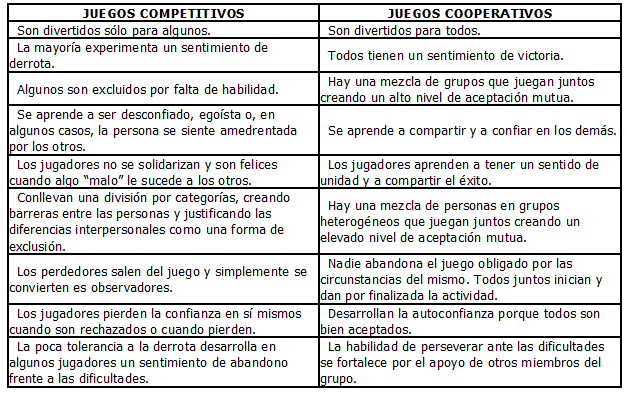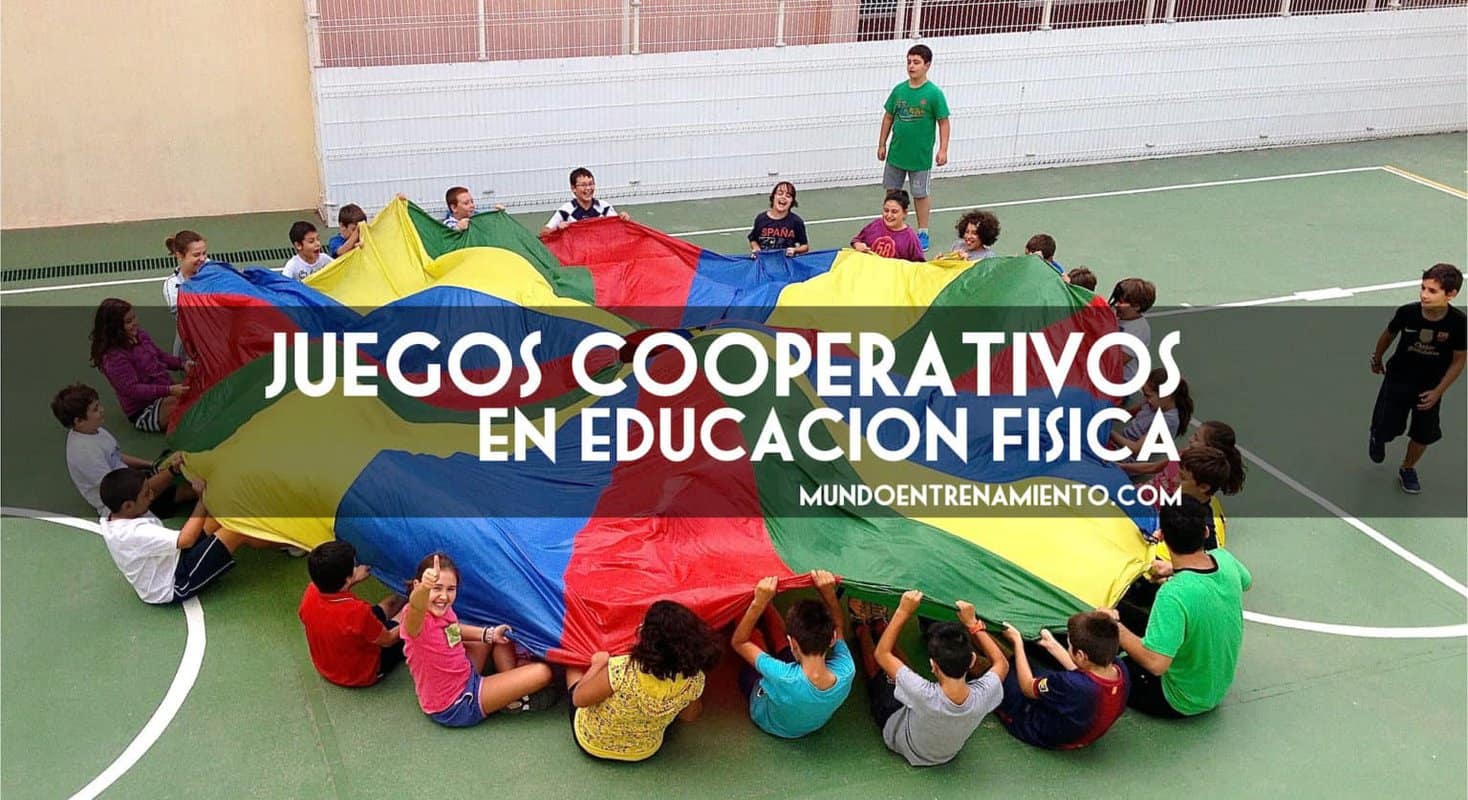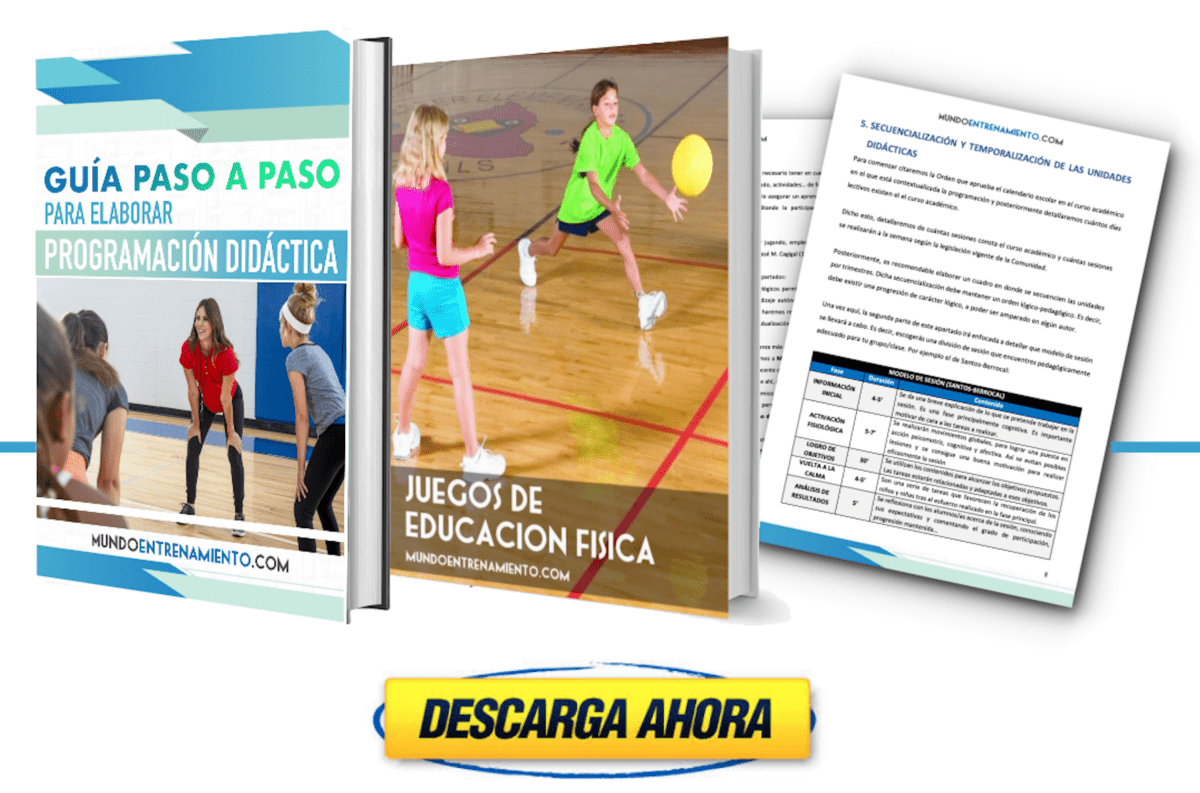Cooperative games in Physical Education are shown as a series of very important tools within this area. Cooperative games in physical education have a great educational component, due to the significance of their learning.
Cooperative games in Physical Education are important as a work tool or as content in itself, with a deeply demonstrated psycho-pedagogical potential (1).
Many investigations show the importance of cooperative games in Physical Education as a global development of boys and girls; intellectually, perceptively, perceptually, coordinatively, socially, communicatively and cooperatively or emotionally, through the cultivation of self-concept, balance and psycho-affective control (2).
Concept of cooperative play in Physical Education
Play has been present throughout history, in all peoples and cultures (racing games, games of chance,…). However, they were not always practiced for the same purposes: playful, educational, magical.
The first book of games written in Europe is the “Book of games” by authors including Alfonso X the Wise. Also in the book “Don Quixote de la Mancha” by Miguel de Cervantes, whose first part was published in 1605, there are references to numerous games.
On December 20, 1959, in the General Assembly of the United Nations, the Universal Declaration of the Rights of the Child is approved, in which it is established that the child must play and this will be an end pursued by education.
Regarding the concept of play, etymologically, play comes from “jocus” (lightness, frivolity) and “ludus” (act of playing). The dictionary of the Royal Spanish Academy defines it as “the action of playing, pastime and amusement”. However, it is difficult to find in a single definition all the aspects of play. The following definitions are mentioned below:
Cagigal: “free, spontaneous and pleasurable action, which takes place in a spatial and temporal limitation, according to established or improvised rules and whose informative element is tension”.
Russel: “it is an activity that generates pleasure”.
Rodriguez Herrera: “children’s play is a pure, spontaneous and pleasurable activity that contributes to the integral development of children”.
“Play is a natural recreational activity of uncertainty, subject to a sociocultural context”.
Within the teaching-learning process in the area of Physical Education, we must differentiate the use of play as an end in itself from play as a means to work on the rest of the contents.
- Play as an end in itself: its main objectives are fun, distraction and recreation.
- Play as a means: through games the basic objectives and competences programmed for a specific didactic unit (for example, social and citizenship competence) will be achieved.
Characteristics of cooperative games in Physical Education
Regarding the characteristics of cooperative games in Physical Education, we will point out the following:
- Recreational: the game is entertainment, pastime.
- Natural: it is spontaneous, it arises freely, at a given moment.
- Uncertainty: it is fictitious, with unforeseen effects and unpredictable results.
- Socio-cultural context: the game is influenced by the environment in which it takes place.
- It is a free action, since no one is forced to play.
- It is carried out with spatial and temporal limitations.
- It is conventional, since rules must be respected.
- It is a motivating and creative process.
- It is uncertain: the final result is unknown.
- It is different in children and adults.
Differences between competitive and cooperativegames in Physical Education

Practical proposal of cooperative games in Physical Education.
Cooperative game: the rain of balloons
Objective: Cooperation, spatial-temporal perception and agility.
Development: The whole class with a balloon. Each one of them will hit the balloon in a delimited space, at the teacher’s signal they will hit their balloon hard and from then on they will have to cooperate with the rest of the classmates so that no balloon touches the ground, through successive blows.
Variant: At the teacher’s signal, in addition to the balloons that each one has, the teacher will introduce two or three more balloons so that there are more balloons than students.
Cooperative games in Physical Education: The island sinks.
Objective: cooperation, coordination and balance.
Development: several circles are drawn, the first one bigger and the successive ones smaller.
The whole class gets into the first circle and at the teacher’s signal they will have to jump to the next circle trying not to leave any partner out, grouping in such a way that they occupy as little space as possible.
This action will be repeated until they reach a circle in which they do not fit all or when any of the students step out of the “island”.
Variant: many circles of the same size are drawn on the floor and the students run around them at the teacher’s signal and get into a circle each. The teacher in each turn will cross out a circle, so the students will have to figure out how to get into the remaining circles (less and less) by distant positions or groupings.
Cooperative game: The train
Objective: Cooperation, coordination, spatial perception.
Development: The whole class is placed in single file holding the shoulders of the partner in front of them. In the middle of each one a basketball will be placed, which will be held by the back of the one in front and the chest of the one behind.
The objective is to reach a certain point without any ball falling to the ground. As a main rule, none of the students can touch the ball with their hands to hold it.
Variations: Backward displacement instead of forward displacement. Only the first in line will have his eyes open, guiding the rest of the teammates.
Cooperative games in Physical Education: Everybody Underneath
Objective: Cooperation, coordination, agility, spatial and temporal perception.
Development: Each student grabs a piece of the giant parachute and begins to rotate in a direction previously indicated by the teacher.
At the teacher’s signal, they have to throw the parachute up as high as they can and quickly get under it without any of the students getting out of it.
Variation: Instead of throwing the parachute, the teacher inserts a ball in the center of the parachute for the students to roll it in the direction indicated (3, 4, 5).
Cooperative Games in Physical Education: Through the Hoop
Objective: Cooperation, hand-eye and hand-eye coordination, agility.
Development: All students form a large circle holding hands and try in a certain amount of time to get a hoop from one end of the circle to the other.
To do this, they will have to move with agility so that the hoop passes through their whole body and goes to the next partner. No student may let go of their hands.
Variation: The teacher will introduce more hoops.
Cooperative games in Physical Education: Mine field
Objective: Cooperation, spatial perception, general dynamic coordination.
Development: All students in a row holding hands in an interspersed manner, some facing forward and others backward. In the multi-sports court is placed varied material such as hoops, spades, balls, ropes, etc..
The objective of the game is for the students to reach the other side of the court without touching any of the materials on the floor, without letting go of each other’s hands and helping each other to do so. If someone steps on the material, they will have to return to the starting point.
Variants: on one leg for those who are facing forward. Determine a time of arrival (3, 4, 5).
What happens in children’s brains while they play?
Conclusions on cooperative games
The didactic application of cooperative games in Physical Education in our physical education sessions is immense, since the game is an excellent methodological resource to work the contents in a playful and motivating way.
In addition, cooperative games in Physical Education will contribute to the integral development of children in different areas: cognitive (improving intelligence, concentration and creativity), affective-social (improving autonomy and self-esteem by improving personal relationships with others) and psychomotor (developing basic physical skills, balance and coordination aspects).
Cooperative games are a very effective tool in our educational practice, they will help us to improve and work on positive attitudes, fostering companionship and the values of respect for the environment, material and respect for our classmates, etc.
Below you can download two free ebooks on Physical Education
Bibliography
- De la Cruz Manjón Pozas, D., Lucena Zurita, M. (2010). The cooperative game as a means of promoting values in physical education classes in primary school. II Congrés Internacional de Didàctiques. 235.
- Garaigordobil, M. (2007). Psychoeducational intervention for the development of children’s personality: The GAME programs (Closing Conference). International Congress on Educational and Vocational Guidance. New educational approaches and their impact on school guidance. Castellón. Organized by the Universitat Jaume I.
- Orlick, T. (1988). The cooperative game. In Cuadernos de Pedagogía, nº 163.
- Velázquez, C. (1995). Games with parachutes in Physical Education classes. La Comba. Valladolid.
- VV.AA. (1995). Exercises of Physical Education for Primary Education. Fichero de juegos no competitivos. Spanish School. Madrid.



